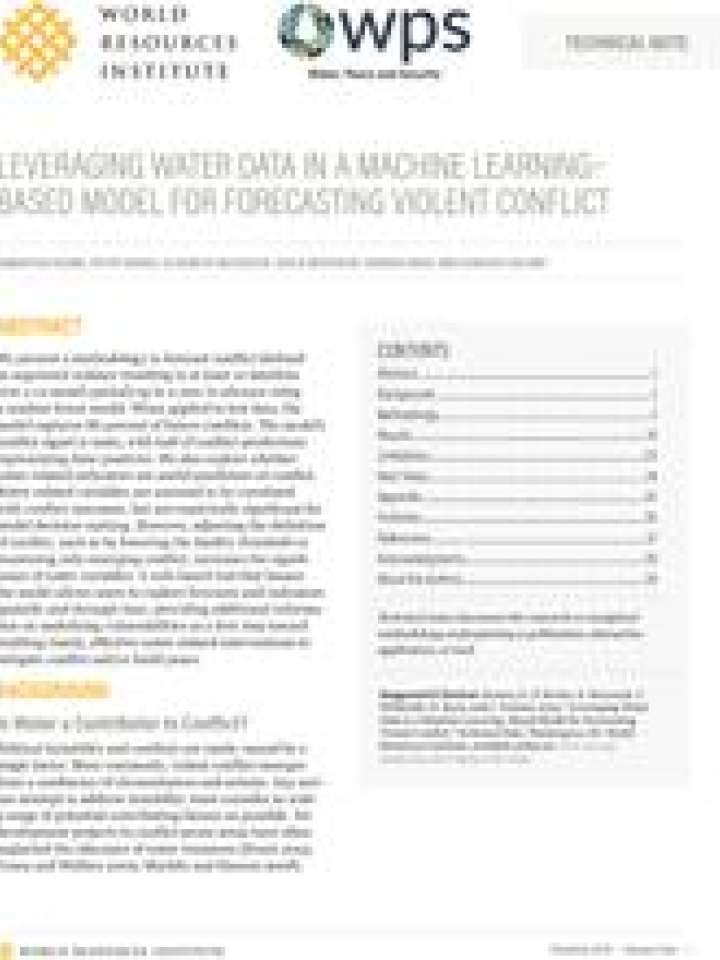Leveraging water data in a machine learning–based model for forecasting violent conflict
Here it is presented a methodology to forecast conflict (defined as organized violence resulting in at least 10 fatalities over a 12-month period) up to a year in advance using a random forest model. When applied to test data, the model captures 86 percent of future conflicts. The model’s conflict signal is noisy, with half of conflict predictions representing false positives. This paper also explores whether water-related indicators are useful predictors of conflict. Water-related variables are assessed to be correlated with conflict outcomes, but not empirically significant for model decision-making. However, adjusting the definition of conflict, such as by lowering the fatality threshold or examining only emerging conflict, increases the significance of water variables. A web-based tool that houses the model allows users to explore forecasts and indicators spatially and through time, providing additional information on underlying vulnerabilities as a first step toward enabling timely, effective water-related interventions to mitigate conflict and/or build peace.
Explore further
